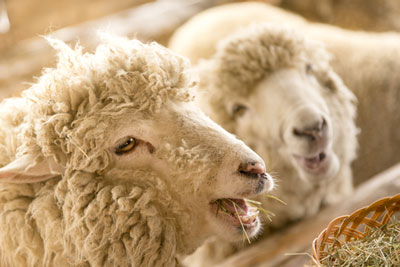Bluetongue: EFSA reviews control measures
- Like
- Digg
- Del
- Tumblr
- VKontakte
- Buffer
- Love This
- Odnoklassniki
- Meneame
- Blogger
- Amazon
- Yahoo Mail
- Gmail
- AOL
- Newsvine
- HackerNews
- Evernote
- MySpace
- Mail.ru
- Viadeo
- Line
- Comments
- Yummly
- SMS
- Viber
- Telegram
- Subscribe
- Skype
- Facebook Messenger
- Kakao
- LiveJournal
- Yammer
- Edgar
- Fintel
- Mix
- Instapaper
- Copy Link
Posted: 10 March 2017 | EFSA | No comments yet
Mass vaccination programmes would be the only effective measure for fully eradicating bluetongue in Europe say EFSA…


Mass vaccination programmes lasting at least five years in combination with improved, continuous surveillance systems would be the only effective measures for eradicating bluetongue in Europe, EFSA has concluded.

Eradication of bluetongue is very difficult – at least five consecutive years of vaccination covering 95% of susceptible cattle and sheep would be needed, the experts concluded. Such mass vaccination campaigns would have to be followed by sensitive surveillance systems capable of detecting low levels of virus prevalence – lower than 1% of animals in a monitored area. The disease could otherwise re-appear some years after completion of the vaccination campaign.
Surveillance systems should be defined on a case-by-case basis taking into account aspects such as the geographical area monitored and the epidemiological phase of the disease.
Immunisation and transmission
Experts also highlighted that:
- New-born animals receive antibodies from their mothers that protect them from the disease for about three months. However, these antibodies may interfere with vaccination, thus making vaccination ineffective during this period. Immunity starts in most cases 21 days after the second dose of the basic vaccination scheme.
- Some species of the midges that transmit the disease are active throughout the year – especially in mild-winter areas such as the Mediterranean basin. In these areas, transmission of the virus may occur at any time. In colder areas, such as in northern Europe, midges are inactive for about three winter months, during which transmission is halted.
In line with EFSA’s “Promoting Methods for Evidence Use” approach , EFSA’s Panel on Animal Health and Welfare captured the strategy for performing this risk assessment in a protocol that documents all the steps taken in reaching its final conclusions. This new approach enhances the robustness and transparency of the scientific process.
EFSA’s scientific advice will assist policy-makers as they review legislation on bluetongue.
Next steps
EFSA will classify different types of bluetongue according to their characteristics by the end of June 2017. This will help identify specific protection and control measures.
What is bluetongue?
Bluetongue is a vector-borne viral disease of domestic and wild ruminants such as sheep, goats, cattle and deer. It is transmitted through the bites of certain species of Culicoides midges.







